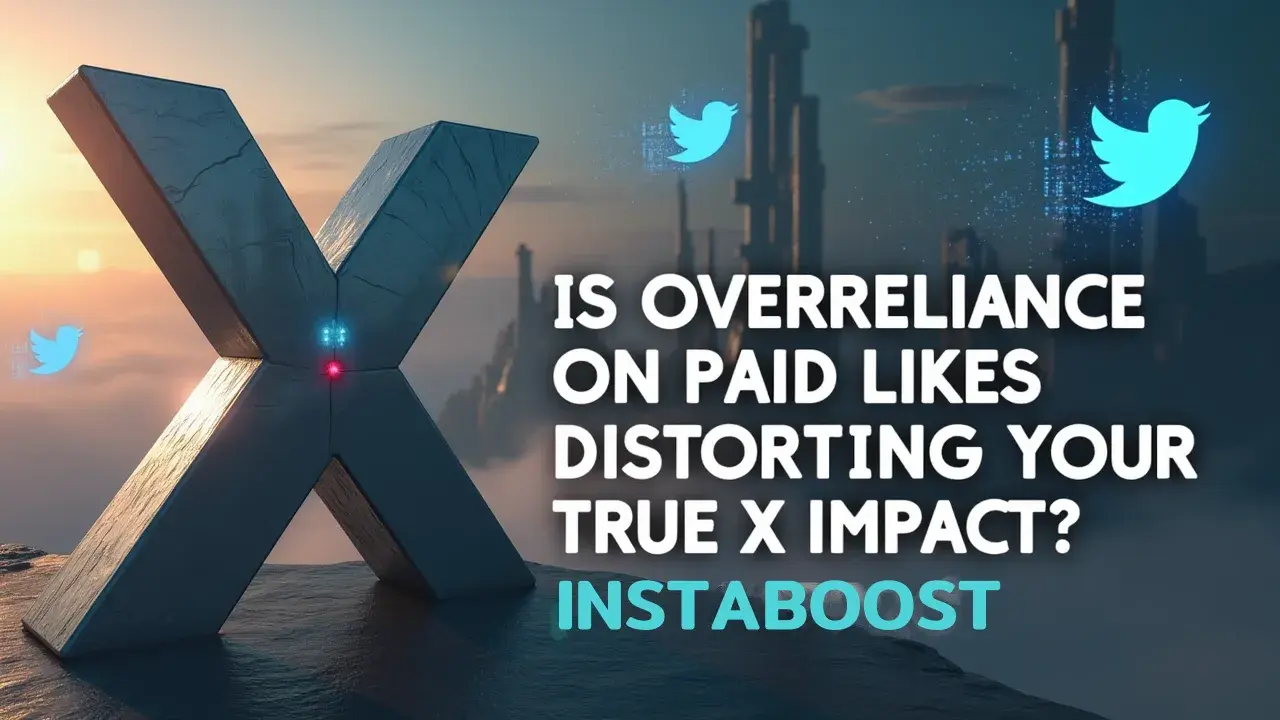Is Overreliance on Paid Likes Distorting Your True X (Twitter) Impact?
Paid likes can inflate surface metrics while obscuring genuine influence. Authentic engagement reflects real interest, conversation quality, and follower relevance, whereas excessive paid interactions dilute signals that indicate true impact. Evaluating comments, shares, and consistent interaction patterns gives a clearer picture of reach and resonance. The smart path is balancing promotion with content that earns organic responses and tracking metrics that map to meaningful outcomes.
The Numbers Game: When Metrics Mask Meaning
When you scroll through X, it’s pretty clear why likes matter to people. Those notifications pop up fast and give you a little boost – it feels like a sign that what you posted got noticed, even if it’s just for a second. Now, though, likes are easy to buy, and that comes in handy for brands that want to look popular without much effort.
It does make things complicated, since you can’t always tell what’s real interest and what’s just numbers that someone paid for. It’s tempting, since those numbers make your stats look better right away and can make a post seem busy, regardless of whether anyone’s actually paying attention. Especially when you’re looking for ways to expand your reach on X, it’s easy to get caught up in chasing those likes.
But then it gets hard to see what’s genuine and what’s just for show – you start to believe the numbers say more than they do, whether you’re a creator or a business. Actual engagement, like people commenting or sharing or having a conversation, tends to build more trust, but that can slip your mind when everyone seems focused on numbers.
You might look at your X account and see that it looks active, but it doesn’t really feel like anyone’s connecting with you. With more brands crowding in, it feels more important to tell the difference between numbers that look good and signs that people are actually interested. Sometimes thinking about what those stats really mean changes how you use the platform, or how you think about your own reach…
You might look at your X account and see that it looks active, but it doesn’t really feel like anyone’s connecting with you. With more brands crowding in, it feels more important to tell the difference between numbers that look good and signs that people are actually interested. Sometimes thinking about what those stats really mean changes how you use the platform, or how you think about your own reach…

Surface Credibility vs. Real Influence
I’ve said “we’re fine” before, even when it wasn’t really true. It reminds me a bit of what happens on X, where someone can buy likes and suddenly seem a lot more popular than they actually are. From the outside, the numbers might look good, but if you’re running the account, you can usually tell when it doesn’t add up.
When brands or creators pay for engagement, they’re hoping for results without having to actually build real connections. But those numbers don’t really show if anyone’s actually paying attention, sharing your stuff, or caring enough to do anything with it. Tools like INSTABOOST make it simple to bump up your likes – or even buy X followers – so your profile looks different at a glance, but that doesn’t usually turn into real conversations or people who stick around.
If you watch your own account, it’s not that hard to notice; your reach might jump, but you’re not getting more replies or actual back-and-forth. Relying on paid likes ends up making your stats harder to read, and it gets tricky to figure out which posts people actually care about. In the end, big numbers on a profile don’t say much if the people behind them aren’t really interested. If most of your audience is only there because of money, it doesn’t really feel like influence – it’s more like borrowing some attention for a bit.
From Vanity Metrics to Value Metrics
Scaling up isn’t really about chasing every opportunity to grow as quickly as possible. It’s more about paying attention to where your effort goes. Before trying to boost your numbers on X, it’s worth stopping to think about which stats actually matter for what you’re trying to do. Buying likes can make things look better on the surface, but that usually doesn’t lead to people actually caring about what you post or sticking around.
What tends to matter more is finding people who actually want to be part of the conversation. When someone replies with something real, retweets you and adds their own thoughts, sends you a direct message, or gives straightforward feedback, that seems like a better sign of actual reach than anything you could pay for. There’s even talk about the difference between authentic likes for X and the ones you can just buy, and it’s pretty clear the first kind actually makes a difference when it comes to real connection. It’s easy to get distracted by paid engagement, but it rarely shows you the full picture.
What seems more important is whether you’re building trust and conversations that matter, not just chasing whatever’s popular. Growing in a way that lasts means looking at where your numbers are coming from and whether they actually reflect something real. There’s a big difference between having a lot of strangers scroll past your posts and having a group of people who genuinely care. Tools like INSTABOOST might give you a bit more visibility for a while, but it seems like actual influence comes from being straightforward and consistent, rather than trying to work the system. If you want your approach on X to hold up over time, it probably makes sense to pay attention to the responses that feel genuine, and to the kinds of engagement you can’t really buy. After a while, the rest just sort of fades into the background...















